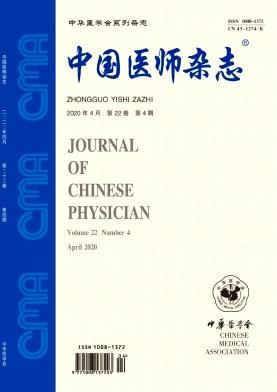Effect of sivelestat sodium on early inflammatory reaction and pulmonary edema in rats with smoke inhalation induced lung injury
Q4 Medicine
引用次数: 0
Abstract
Objective To investigate the effects of sivelestat sodium on early inflammatory response and pulmonary edema in rats with smoke inhalation-induced lung injury. Methods Seventy-five Sprague-Dawley rats were randomly divided into control group, model group, low-dose group, middle-dose group and high-dose group. The smoke inhalation model was continued except for the control group. The rats were given intraperitoneal injection of normal saline, cevicell sodium 10 mg/kg, 20 mg/kg and 30 mg/kg. The general condition and lung tissue were observed after 24 hours. Results Compared with the control group, rats in each group had a certain degree of lung injury, alveolar wall thickening, alveolar interstitial hyperemia, etc. The alveolar septal thickness, lung tissue wet-dry (W/D) level, the incidence of edema and the levels of tumor necrosis factor-alpha (TNF-α), interleukin-6 (IL-6), neutrophil elastase (NE) and myeloperoxidase (MPO) in the model group were significantly higher than those of the other 4 groups. The lung function recovery was highest in the low dose group and the alveolar septal thickness was the highest among the dose group. The alveolar wall thickening incidence of W/D level and pulmonary edema in lung tissue in the low dose group were (6.76±0.40)μm, (5.18±0.13) and 40.00%, respectively, and the levels of TNF-α, IL-6, NE and MPO were (19.62±0.83)pg/L, (9.41±0.25)pg/L, (6.23±0.18)μg/L and (30.64±0.87)pg/L, significantly better than the middle dose group and high dose group (P<0.05). Conclusions Sivelestat sodium can significantly affect the smoke inhalation lung injury, and improve the recovery of liver function, which can significantly reduce the incidence of inflammation and pulmonary ede-ma in the lung, but its therapeutic effect and drug delivery. There was a significant association between doses and therapeutic effect, in the case of rats, a dose of 10 mg/kg was the best for treatment. Key words: Lung injury; Smoke inhalation injury; Sivelestat sodium; Inflammation; Pulmonary edema; Rats西司他钠对烟雾吸入性肺损伤大鼠早期炎症反应及肺水肿的影响
目的探讨西司他钠对烟雾吸入性肺损伤大鼠早期炎症反应及肺水肿的影响。方法将75只sd大鼠随机分为对照组、模型组、低剂量组、中剂量组和高剂量组。除对照组外,继续烟尘吸入模型。大鼠分别腹腔注射生理盐水、塞韦细胞钠10 mg/kg、20 mg/kg、30 mg/kg。24h后观察一般情况及肺组织。结果与对照组比较,各组大鼠均出现一定程度的肺损伤、肺泡壁增厚、肺泡间质充血等症状。模型组大鼠肺泡间隔厚度、肺组织干湿(W/D)水平、水肿发生率及肿瘤坏死因子-α (TNF-α)、白细胞介素-6 (IL-6)、中性粒细胞弹性酶(NE)、髓过氧化物酶(MPO)水平均显著高于其他4组。低剂量组肺功能恢复最高,肺泡间隔厚度以高剂量组最高。低剂量组肺泡壁增厚发生率W/D水平和肺组织肺水肿分别为(6.76±0.40)μm、(5.18±0.13)和40.00%,TNF-α、IL-6、NE和MPO水平分别为(19.62±0.83)pg/L、(9.41±0.25)pg/L、(6.23±0.18)μg/L和(30.64±0.87)pg/L,均显著高于中剂量组和高剂量组(P<0.05)。结论西维司他钠可显著影响烟雾吸入性肺损伤,改善肝功能恢复,可显著降低肺部炎症和肺水肿的发生率,但其治疗效果与给药方式有关。剂量与治疗效果之间存在显著相关性,对大鼠而言,10 mg/kg的剂量是最佳治疗剂量。关键词:肺损伤;烟雾吸入性损伤;Sivelestat钠;炎症;肺水肿;老鼠
本文章由计算机程序翻译,如有差异,请以英文原文为准。
求助全文
约1分钟内获得全文
求助全文

 求助内容:
求助内容: 应助结果提醒方式:
应助结果提醒方式:


